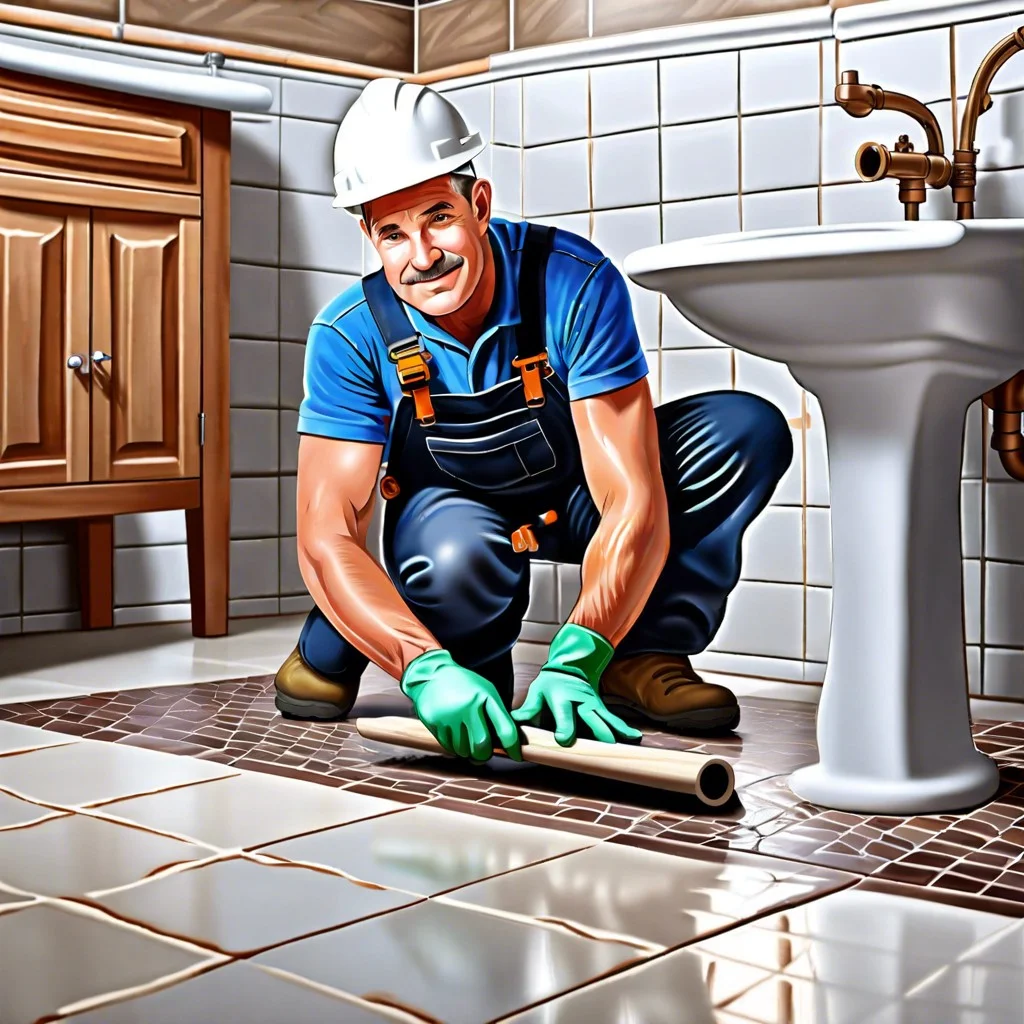Last updated on
This article will guide you on effective strategies to vent a bathroom that doesn’t have direct access to outdoor ventilation, helping to maintain a mold-free and moisture-controlled environment.
Key takeaways:
- Ventilation is vital for preventing mold, moisture, and odors.
- Consider using a recirculating exhaust fan for odor removal.
- Install a ductless mini-split system for temperature and humidity control.
- Passive ventilation systems can improve air circulation in windowless bathrooms.
- Hiring a professional contractor ensures proper installation and compliance.
Understanding the Importance of Bathroom Ventilation
Ventilation is a non-negotiable in any bathroom setup – it’s your frontline defense against mold, mildew, and other moisture-related problems. Without it, you’re inviting damp conditions that can damage structures and finishes, potentially impacting your health with allergens and pollutants. It’s also about comfort; removing odors and humidity makes for a much more pleasant environment.
Essentially, it strikes at the heart of indoor air quality, a critical component of any household. Understanding the mechanics of airflow and moisture control informs smarter decisions on how to effectively manage these unseen challenges, even in bathrooms that can’t vent directly outdoors.
Use a Recirculating Exhaust Fan
Opting for a recirculating exhaust fan presents a savvy solution in situations where external venting proves unfeasible. This innovative device filters the air through charcoal filters, successfully diminishing odors and airborne contaminants.
Installation is straightforward; it typically mounts on the ceiling or wall and requires no complicated ductwork. Bear in mind, though, while this fan efficiently manages air quality, it’s limited in reducing humidity levels.
Regularly replacing the charcoal filters is crucial to maintain its effectiveness. Choose wisely for a bathroom setting — a fan with adequate cubic feet per minute (CFM) rating ensures the air stays as fresh as possible.
Install a Ductless Mini-Split System
Investing in a ductless mini-split system can be an innovative solution for humidity and temperature regulation in a windowless bathroom. These systems combine an indoor air-handling unit with an outdoor compressor/condenser, bypassing the need for extensive ductwork. Here’s how it works:
- The indoor unit, often wall-mounted, directly manages the climate within the bathroom.
- Heat is absorbed or released by the refrigerant depending on whether you’re heating or cooling the room.
- Through a small conduit, which houses the power cable, refrigerant tubing, and a condensate drain, the indoor and outdoor units are connected.
- The system not only cools or warms the air but also includes filters to clean the air of small particulates.
While the initial investment might be higher compared to other options, the energy efficiency and dual heating/cooling capabilities often result in long-term savings and increased comfort levels. Additionally, professional installation is crucial for optimal functioning and adherence to safety standards.
Create a Passive Ventilation System
Passive ventilation leverages natural airflow patterns to improve air circulation in bathrooms lacking outside access. This strategy revolves around the principle of air replacement, accomplished through the strategic placement of vents or grilles within the bathroom and adjoining areas.
Consider these points for implementing a passive system:
- Install air transfer grilles in the bathroom door or walls to promote air exchange with adjacent rooms.
- Utilize the stack effect by placing vents high on an interior wall, where warm, moist air naturally rises and exits, drawing fresher, drier air into the space from below.
- Ensure that the adjoining room has adequate ventilation to prevent merely shifting the humidity issue to another part of the home.
- Incorporate a jump duct in the ceiling, connecting the bathroom to a hallway or space with better airflow to balance pressure and facilitate air movement.
While passive systems won’t match the power of mechanical ventilation, they offer a silent, energy-efficient alternative that can mitigate moisture and odors in bathrooms with limited venting options.
Hire A Professional
Engaging a skilled contractor can make an immense difference in a project like this. Professionals come with the experience of navigating the perils of a no-outside-access bathroom vent situation. They can assess structural limitations, propose the best ventilation solutions, and install your system with the building codes in mind.
Moreover, they can identify potential for utilizing existing ductwork to connect to exterior vents where possible, even when it’s not straightforward. Going the professional route may seem like a larger investment upfront, but it’s a decision that often saves both time and complications in the long run. It ensures that the work is done right the first time, avoiding the pitfalls and hazards that might accompany a less experienced approach.
FAQ
Can you install a bathroom exhaust fan without duct?
Yes, a bathroom exhaust fan can be installed without a duct, using a ductless bathroom fan which requires less space and comes in numerous design options.
How do you ventilate an enclosed bathroom?
To properly ventilate an enclosed bathroom, an effective method would be to install an appropriate extractor fan that can pull moisture out of the room and vent it externally.
What if there is no ventilation in bathroom?
A bathroom lacking ventilation can potentially lead to numerous problems, including peeling accessories, tainted fabrics, condensation accumulation, and a rise in allergens and toxic substances, and additionally, increase the strain on your air conditioning system.
Is it permissible to use a ductless exhaust fan for a bathroom?
Yes, it is permissible to use a ductless exhaust fan in a bathroom, although they may not be as effective as ducted fans in controlling moisture and odor.
What are the ramifications of having no window in a bathroom on air quality?
Lacking a window in a bathroom can lead to poor air quality due to insufficient natural ventilation, encouraging mold growth and unpleasant odors.
How does a recessed light fan combo contribute to bathroom ventilation?
A recessed light fan combo enhances bathroom ventilation by discretely extracting moist air while providing illumination, thus preventing the build-up of mold and mildew.
Recap




